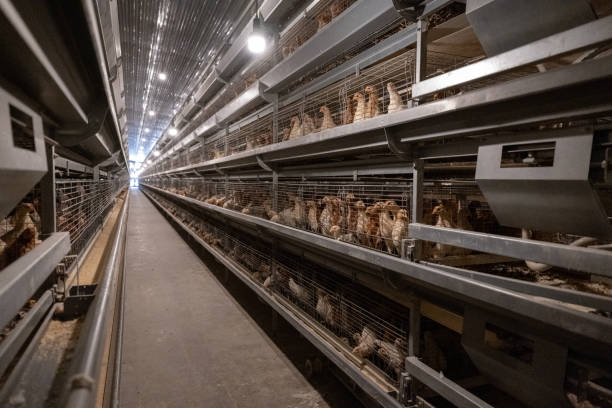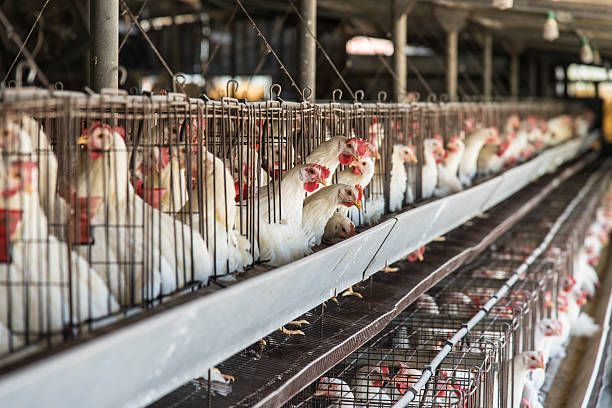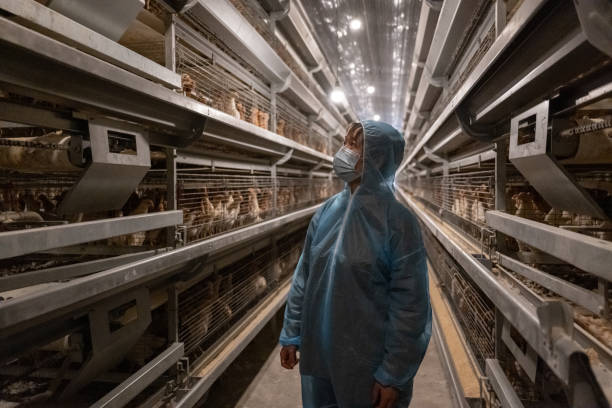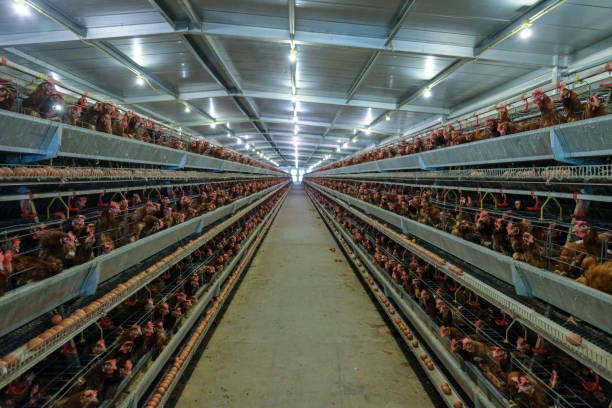
Layer Farming Business Plan Success in India: Key Strategies and Considerations
Layer Farming Business Plan Success in India: Key Strategies and Considerations
India’s poultry industry is booming, and layer farming, the practice of raising chickens for egg production, is a significant contributor. With a rising demand for eggs, starting a layer farming business in India presents a lucrative opportunity. However, success requires meticulous planning, a solid understanding of the market, and the implementation of effective management strategies. This article provides a comprehensive guide to developing a successful layer farming business plan in India, covering key strategies and considerations to help you navigate the industry and maximize your chances of profitability.
Market Analysis: Understanding the Demand and Competition
Before diving into layer farming, a thorough market analysis is crucial. This involves understanding the demand for eggs in your target region, identifying your potential customer base, and assessing the competitive landscape.
Demand Assessment: Research the egg consumption patterns in your area. Factors like population density, dietary habits, and income levels influence egg demand. Data can be obtained from agricultural departments, market research reports, and local retailers.
Target Customers: Identify your potential customers. Will you be selling directly to consumers, supplying to retailers, or catering to restaurants and hotels? Each customer segment has different needs and preferences.
Competition Analysis: Identify existing layer farms in your region. Analyze their scale of operation, product quality, pricing strategies, and distribution channels. This understanding will help you differentiate your business and gain a competitive edge.
Choosing the Right Breed: Maximizing Egg Production
Selecting the appropriate breed is a critical factor impacting the overall productivity and profitability of your layer farm. Different breeds have varying egg-laying capacities, feed conversion ratios, and disease resistance.
Popular Breeds in India: Some of the popular layer breeds in India include:
ISA Brown: Known for its high egg production and adaptability to various climatic conditions.
Hy-Line Brown/Grey: Another excellent egg-laying breed with good feed efficiency.
BV-300: A hardy breed suitable for Indian climates with good egg production.
Factors to Consider: When choosing a breed, consider factors like egg production rate, egg size and color, feed consumption, disease resistance, and adaptability to local climate conditions. Consult with poultry experts and other farmers to make an informed decision.
Farm Location and Infrastructure: Creating an Optimal Environment
The location of your layer farm and the infrastructure you set up play a crucial role in ensuring the health, comfort, and productivity of your birds.
Location Selection:
Accessibility: Choose a location with good accessibility to markets and transportation networks.
Water Availability: Ensure a reliable source of clean water for drinking and cleaning purposes.
Power Supply: Secure a stable power supply to operate equipment like lighting, ventilation, and feeding systems.
Biosecurity: Select a location away from residential areas and other poultry farms to minimize the risk of disease transmission.
Infrastructure Requirements:
Poultry Sheds: Construct well-ventilated and adequately lit poultry sheds to protect the birds from extreme weather conditions.
Cages/Housing System: Decide on the housing system: deep litter, free-range, or cage system. Cage systems, like layer cages from Livi Machinery, offer efficient space utilization, better hygiene, and easier egg collection.
Feeding and Watering Systems: Install automated feeding and watering systems to ensure efficient and consistent supply of feed and water.
Egg Collection and Storage: Set up a dedicated area for egg collection, cleaning, and storage. Maintain cool temperatures in the storage area to preserve egg quality.
Waste Management: Implement a proper waste management system to dispose of poultry manure and other waste materials hygienically.
Feeding and Nutrition: Ensuring Optimal Egg Production and Bird Health
Proper nutrition is essential for maintaining the health and productivity of your layer hens. Providing a balanced diet ensures optimal egg production and egg quality.
Nutritional Requirements: Layer hens require a diet rich in protein, carbohydrates, fats, vitamins, and minerals. The specific nutritional requirements vary depending on the age and stage of production.
Feed Formulation: You can either purchase commercially prepared layer feed or formulate your own feed using ingredients like maize, soybean meal, rice bran, and mineral supplements. Consult with a poultry nutritionist to develop a balanced feed formulation.
Feeding Schedule: Implement a consistent feeding schedule to ensure that the birds have access to feed throughout the day. Adjust the feed quantity based on the birds’ age, weight, and egg production rate.
Water Management: Provide clean and fresh water at all times. Water is crucial for hydration, digestion, and egg formation. Regularly clean the water troughs or nipples to prevent contamination.
Health Management and Biosecurity: Preventing Diseases and Maintaining Bird Health
Maintaining the health of your layer hens is essential for minimizing losses due to diseases and maximizing egg production. Implementing strict biosecurity measures is crucial for preventing the introduction and spread of diseases.
Vaccination Schedule: Follow a recommended vaccination schedule to protect the birds from common poultry diseases like Newcastle disease, infectious bronchitis, and fowl pox. Consult with a veterinarian to develop a customized vaccination program for your farm.
Biosecurity Measures:
Restricted Access: Limit access to the farm to essential personnel only.
Foot Baths and Sanitation: Provide foot baths with disinfectants at the entrance to the farm.
Regular Cleaning and Disinfection: Regularly clean and disinfect poultry sheds and equipment.
Quarantine: Quarantine new birds before introducing them to the existing flock.
Rodent and Pest Control: Implement a rodent and pest control program to prevent disease transmission.
Disease Monitoring: Regularly monitor the birds for signs of illness. Consult with a veterinarian immediately if you suspect any disease outbreaks.
Egg Handling and Marketing: Ensuring Quality and Maximizing Profits
Proper egg handling and marketing are crucial for maintaining egg quality and maximizing profits.
Egg Collection: Collect eggs frequently to prevent breakage and contamination.

Cleaning and Grading: Clean the eggs gently to remove dirt and debris. Grade the eggs based on size and quality.
Storage: Store eggs in a cool and dry place to maintain their freshness and quality.
Packaging: Package the eggs in clean and sturdy containers to prevent damage during transportation.
Marketing Channels:
Direct Sales: Sell eggs directly to consumers at local markets or through online platforms.
Retailers: Supply eggs to grocery stores, supermarkets, and other retail outlets.
Restaurants and Hotels: Cater to the needs of restaurants and hotels.
Egg Processors: Sell eggs to companies that process eggs into various food products.
Branding and Promotion: Develop a brand identity for your eggs and promote your products through advertising, social media, and other marketing channels.
Financial Planning and Management: Ensuring Profitability and Sustainability

Sound financial planning and management are essential for the long-term success of your layer farming business.
Initial Investment: Estimate the initial investment required for setting up the farm, including the cost of land, infrastructure, equipment, and initial stock of birds.
Operating Expenses: Calculate the operating expenses, including the cost of feed, labor, electricity, water, veterinary services, and marketing.
Revenue Projections: Project your revenue based on the expected egg production rate, egg prices, and marketing channels.
Profitability Analysis: Analyze the profitability of your business by calculating the net profit margin, return on investment, and payback period. Secure funding from banks, financial institutions, or government schemes to cover the initial investment and operating expenses.
Record Keeping: Maintain accurate records of all income and expenses. Regularly monitor your financial performance and make adjustments as needed.
Utilizing Layer Cages for Enhanced Efficiency: A Deeper Look
As mentioned earlier, the housing system you choose significantly impacts your farm’s efficiency. Layer cages, specifically those offered by a reputable supplier like Livi Machinery, can provide several advantages:
Space Optimization: Cage systems allow for a higher stocking density compared to deep litter or free-range systems, maximizing the utilization of your farm space.
Improved Hygiene: Cages keep the hens separated from their droppings, reducing the risk of disease transmission and improving overall hygiene.
Easier Egg Collection: Eggs roll out of the cages onto a collection belt, simplifying the egg collection process and reducing breakage.
Better Feed Management: Cage systems allow for precise feed distribution, minimizing feed wastage and ensuring that each hen receives the required amount of nutrients.
Reduced Labor Costs: Automation in cage systems, such as automated feeding and egg collection, can significantly reduce labor costs.
Improved Bird Monitoring: Cages allow for easier monitoring of individual hens, making it easier to identify and address health issues promptly.
When considering layer cages, it’s vital to choose a high-quality system from a trusted supplier like Livi Machinery. Look for cages made from durable materials, with good ventilation, and designed for the comfort and well-being of the hens. Explore different cage configurations to find the one that best suits your farm size and management practices.
Government Support and Schemes: Leveraging Opportunities for Growth
The Indian government offers various schemes and subsidies to promote poultry farming and support entrepreneurs in the sector.
National Livestock Mission (NLM): The NLM provides financial assistance for setting up poultry farms, purchasing equipment, and promoting poultry production.
Agricultural Infrastructure Fund (AIF): The AIF offers subsidized loans for developing agricultural infrastructure, including poultry farms.
State Government Schemes: Many state governments offer their own schemes and subsidies for poultry farming. Contact your local agricultural department to learn more about the available programs.

NABARD: The National Bank for Agriculture and Rural Development (NABARD) provides financial assistance and training programs for poultry farmers.
Take advantage of these government schemes and subsidies to reduce your initial investment and operating expenses. Participate in training programs to enhance your knowledge and skills in poultry farming.
Conclusion: A Path to Sustainable Success
Starting a layer farming business in India can be a rewarding venture, but it requires careful planning, dedication, and a commitment to best practices. By conducting a thorough market analysis, choosing the right breed, creating an optimal environment, providing proper nutrition, implementing strict biosecurity measures, and managing your finances effectively, you can increase your chances of success. Furthermore, considering the benefits of layer cages from reputable suppliers like Livi Machinery can enhance efficiency and profitability.
Remember to stay updated on the latest trends and technologies in the poultry industry. Continuously improve your management practices and adapt to changing market conditions. With hard work, perseverance, and a focus on quality, you can build a sustainable and profitable layer farming business in India. Good luck!
